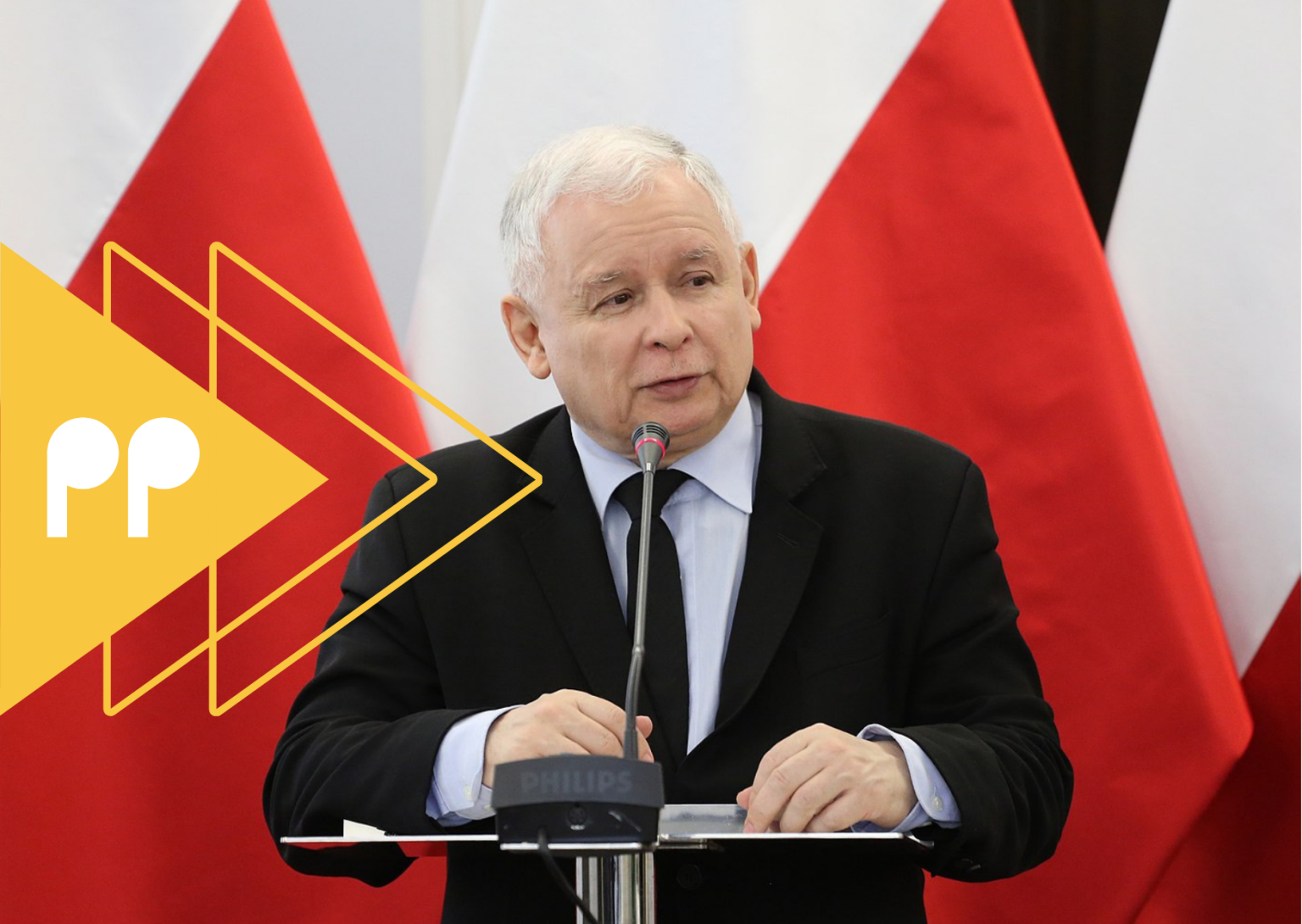The 2023 electoral campaign of Poland’s Law and Justice party (PiS) was a paradoxical blend of strengths intertwined with vulnerabilities. After all, they secured the most mandates of any party but lost the election. Ivan Krastev’s poignant remark on liberal democracy, “What went right is also what went wrong,” could describe their multifaceted strategy. This campaign witnessed a PiS that was simultaneously assertive and ambitious, yet self-undermining.
From monopolising the narrative against major rivals to leveraging their digital prowess, PiS showcased both innovative tactics and questionable manoeuvres. PiS transformed from a party keen on understanding the Polish pulse to one consumed by its own power and ensnared in a self-made information echo chamber over the past eight years, progressively detaching from reality. Let’s dive into how PiS’ once effective strategies led to their loss.
Did you miss our coverage of the Polish elections? Take a look at some of our past articles on the who, what, and how of the Polish election season:
- Five successful strategies of the Polish opposition in the 2023 elections
- Polish opposition united in protest: Is it a good campaign tactic?
- What’s driving Poland’s referendum-election convergence?
- Poland’s election landscape: Polling in a digital age
- INTERVIEW: Insights on Poland’s election from Donald Tusk’s most trusted advisor
- Lex Tusk: Quo Vadis, Poland?
The backdrop to the Polish election
PiS sought what no party has achieved in Polish history—an unprecedented third term. This would be difficult at the best of times, but given the crises during their two terms in government, it seemed impossible for them to secure a strong victory: two Russian invasions of Ukraine (2014, 2022), the 2015 European migrant crisis, the COVID-19 pandemic, a migrant crisis at the border with Belarus, and the post-pandemic economic situation.
Yet despite the context, they still won the most mandates of any party with 35.3 percent support. So, we have to ask ourselves: what worked during their campaign, what harmed them, and where will the party go from here?
Six winning strategies that backfired on PiS
Polarising discourse vs. brutalised emotionalism
- What went right: PiS managed to dominate the political narrative, keeping Donald Tusk and the Civic Platform (PO) under relentless attack. Their portrayal of Tusk as a pawn of foreign leaders effectively marginalised smaller parties. They portrayed him as a puppet of German figures such as European People’s Party leader Manfred Weber and German Chancellor Olaf Scholz, criticising his previous tenure as prime minister for high unemployment and raising the retirement age. This mobilised their core electorate.
- What went wrong: This sharp polarisation may have deepened voter fatigue with the duopoly of PO-PiS (only a binary choice). As PiS intensified divisive tactics, it alienated undecided or moderate voters, pushing them towards alternative parties like the Third Way (TD). PiS’ over-the-top emotionalism led to higher mobilisation, particularly from young and middle-aged citizens, indicating a desire for change.
Bending the rules vs. breaking them
- What went right: By skillfully leveraging state resources and manipulating referendums staged on the same day as the elections for their campaign advantage, PiS developed a powerful electoral machine with seemingly unlimited resources, including from state-owned companies and state-owned media.
- What went wrong: These tactics came at a cost. The blurring of lines between state and party campaign funds not only drew criticism but threatened the very essence of democratic competition, forfeiting trust among many of the electorate.
Generational gambits vs. perils of prioritisation
- What went right: By focusing on the expanding elderly demographic, PiS developed policies including pension increases that resonated with a crucial segment of the electorate. It also focused more on helping smaller, rural communities.
- What went wrong: In doing so, they disregarded the younger generation, especially young women, potentially creating a future voter base that felt ignored or alienated. PiS came last in the age group 18-29 (14.9 percent, compared to 28.3 percent for PO at the top). PiS ranked first among the 50+ age group, but turnout was lower among the elderly than the young. While they came first by more than 24 percentage points in villages, they were less than 1 percent ahead of PO in towns with up to 50,000 residents.
Digital dominance vs. oversaturation of discourse
- What went right: PiS’s digital strategy was second to none, targeting advertisements with precision and optimising their reach across platforms. Their focus on precision meant each advertising penny was meticulously spent to ensure maximum engagement. This undoubtedly contributed to their electoral success.
- What went wrong: Yet, their dominance raised concerns over data privacy and potential manipulation of narratives. While they excelled in retargeting, they also risked overwhelming or alienating voters with their pervasive presence.
Security vs. sovereignty
- What went right: PiS utilised security concerns effectively, projecting themselves as Poland’s staunch defenders against both external (Russian) and internal threats, including what they depicted as the threat of being overwhelmed by Muslim migrants.
- What went wrong: The aggressive politicisation of the military was a gamble that backfired. While it strengthened their image with some, it also led to unprecedented dissent, evident from the resignation of top military officers. PiS framed security more from a party identity standpoint (PiS vs. PO) than related to any specific security concerns. Election-day opinion research showed the migration issue figured low in voters’ priorities.
Poland first, but at what cost?
- What went right: By prioritising and aggressively asserting national interests and refusing to comply with EU court rulings, PiS resonated with a section of the electorate that valued sovereignty and autonomy, but was opposed to strategic partners such as the EU or Ukraine.
- What went wrong: This inward focus strained international relationships and risked isolating Poland from key allies. It cost the country billions of euros in EU recovery funds withheld over abuses of the rule of law. Moreover, it appealed to a narrower segment of the electorate than PiS might have believed, potentially sidelining broader national interests. By turning against Ukraine in the final weeks of the campaign, it took some votes from the Confederation but it may also have driven some to vote for PPL.
What can we learn?
For political practitioners observing Poland’s 2023 PiS saga, here’s the crux: ambition is great, but overplaying your hand backfires. PiS’s strategies were clever, yet they ended up alienating many. Remember, while it’s essential to resonate with your core, never forget the broader audience.
Their failure to heed the lessons from earlier missteps of predecessors, such as PO in 2015, places them on shaky ground. Not all PiS followers are unwavering nationalists; many craving change will naturally gravitate towards rising alternatives unless PiS implements profound organisational and ideological transformations. However, the central insight remains: the forthcoming decade might see pronounced political realignments to the right of the centre in Poland.

